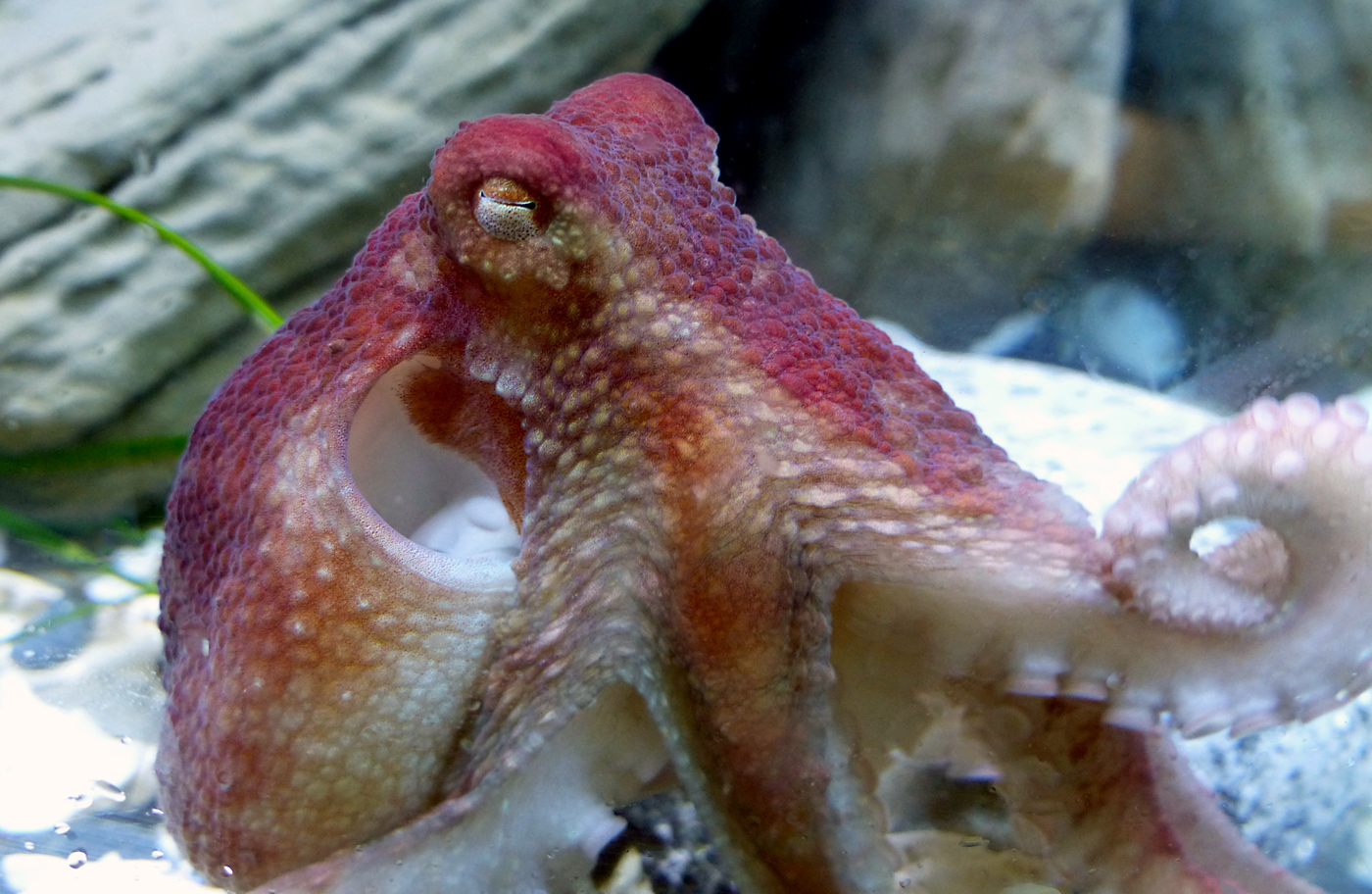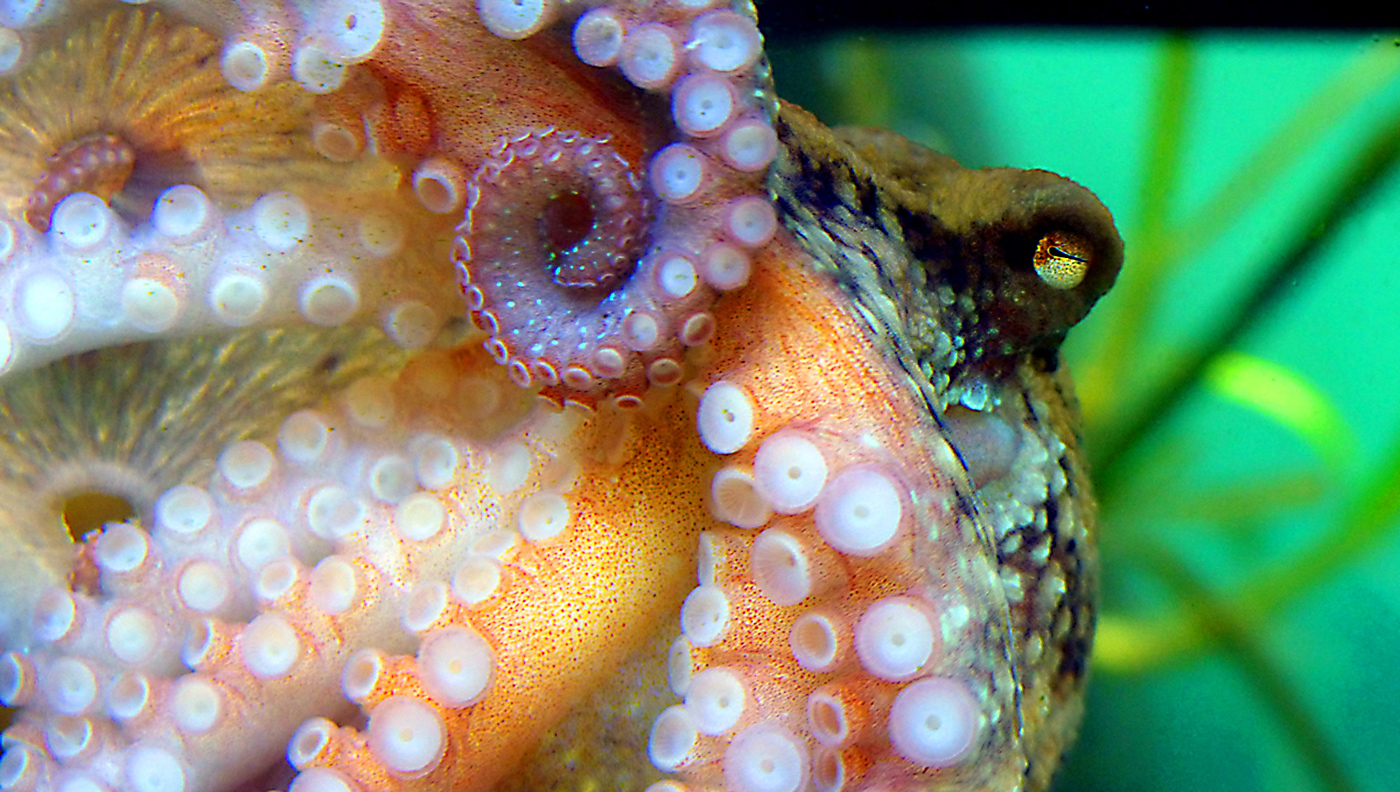Octopus Skin Tricks
Author: Ella Cholette
In nature, it should be known that octopus have the most remarkable brains. They do have nine after all. Not only do they possess the power to perceive, reason, and think, but they are great escape artists with a mastery of disguise… And yet, the question is still asked: how do these creatures so brilliantly hide in their environment?
An octopus is a soft-bodied, eight-limbed mollusc that belongs to the cephalopoda class, which includes squid, cuttlefish, and nautiloids. Like other cephalopods, the octopus is bilaterally symmetrical: it has two eyes, one beak, with a mouth in the center of the eight tentacles.
Watch the diverse colour tricks of Vic High’s octopus “Seamus” and her eventual release back into Saanich Inlet.
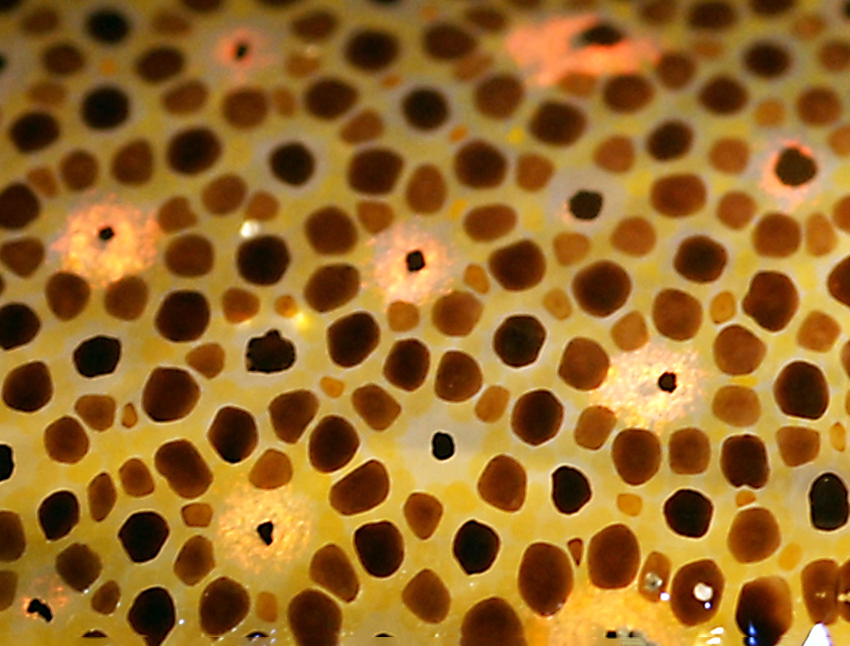
The chromatophores of a cephalopod
Layne, M. (n.d.). Retrieved January 30, 2021, from https://commons.wikimedia.org/wiki/File:Chromatophores.jpg
Each of the octopus’ skin cells contain a tiny packet of pigments called chromatophores. These packets of pigments are responsible for the remarkable colour transformations octopods are famously known for. At the center point of each chromatophore is an elastic sac filled with red, yellow, blue, brown, and black pigments – resembling tiny, dye-filled balloons – that are surrounded by an intricate network of nerves and muscles that work to expand or contract the sac. When the octopus wants to change its colour, these radial muscles pull the sac open, forcing the pigment to expand underneath the skin and thus making the colours more visible. The chromatophores in the octopus can be opened quickly because they are being controlled neurally, meaning the octopus can change colours faster than any other colour-changing animal.
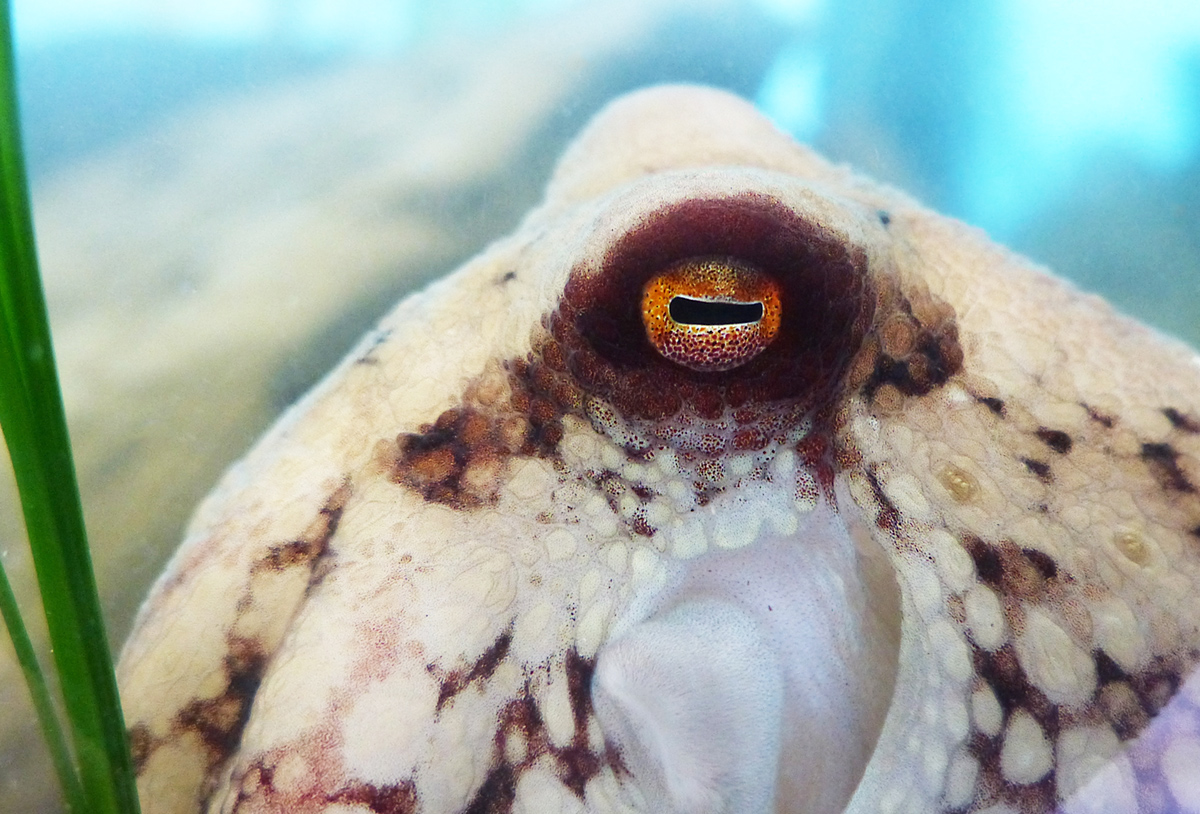
The skin around the eyes of a frightened Ruby Octopus becomes darker to make the eyes, and the octopus, appear larger.
Although these colour changes may be voluntary, they are also strongly associated with the octopus’ behaviourally diverse moods. For example, an angry octopus will turn bright red, while a frightened one will turn pale white.
The most obvious reason why a soft-bodied animal would change colour is to hide from predators – something the octopus is very good at. Yet, some use colour change as a warning to their predators or any other marine animal that threatens them. An example of this is the blue-ringed octopus, hapalochlaeuna lunulata. The Blue-Ringed Octopus is extremely venomous, and when provoked, iridescent blue rings appear over their bodies as a way to warn others of its toxicity. Visit the Blue-Ringed Octopus page for more information on this species.
As well as changing colour, the skin of an octopus can also change texture in seconds: creating fine bumps or high ridges that are used to camouflage with their surroundings. Octopus tend to match their texture with rocks, corals, and other objects nearby that will help them hide from oncoming predators as well as their own potential prey… but, how are they able to do this? With the bad business of papillae!! Papillae are sections in the skin that can be transformed to change texture using small muscle contractions, of which they have three sets. One set is shaped in concentric circles to lift the skin vertically away from the body, another pulls this form together to determine what the shape will be, and the third and final set of muscles pull the raised section back down towards the surface. By having the ability of controlling the size of papillae on their skin, octopuses can create unique textures that result in a disguise that nearly makes them invisible.
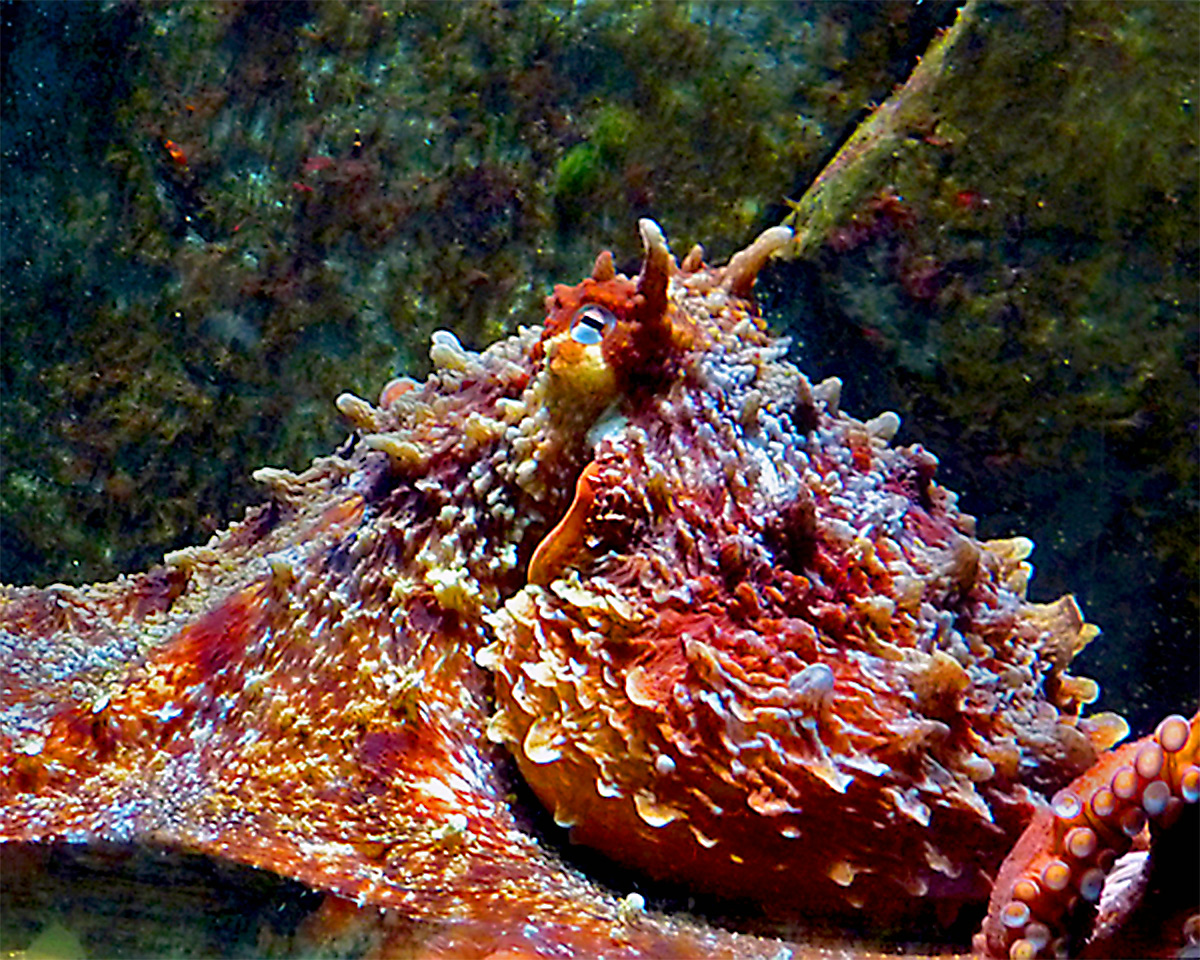
The raised papillae of a Giant Pacific Octopus Enteroctopus dofleni (Photo by S. Hurst and A. Rutledge)
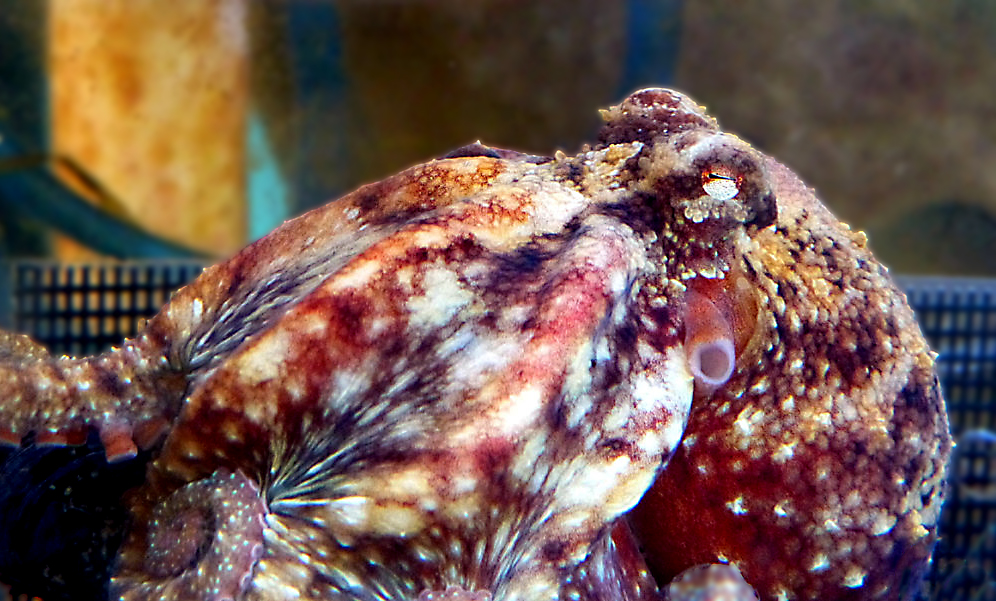
Ruby Octopus (Octopus rubescens)
The reason why octopus are so interesting to many is the fact that they are capable of immediately altering their bodily shape. Although the individual components of octopus’ altering abilities are relatively well-known, how their brains are able to process the visual information around them through their extremities, then send out the correct commands to their camouflaging skin, is something extremely mysterious, and only makes them even more fascinating.
References
Gilmore, R. (n.d.). Cephalopod Camouflage: Cells and Organs of the Skin. https://www.nature.com/scitable/topicpage/cephalopod-camouflage-cells-and-organs-of-the-144048968
Harmon Courage, K. (2013). Octopus! The most mysterious creature in the sea. New York, New York: Penguin Group.
How octopuses don’t tie themselves in knots. (2014). Science and Children, 52(1), 12. https://link.gale.com/apps/doc/A382255974/SCIC?u=61vhss&sid=SCIC&xid=bb47faa0
Photos of Ruby Octopus by D. Young
